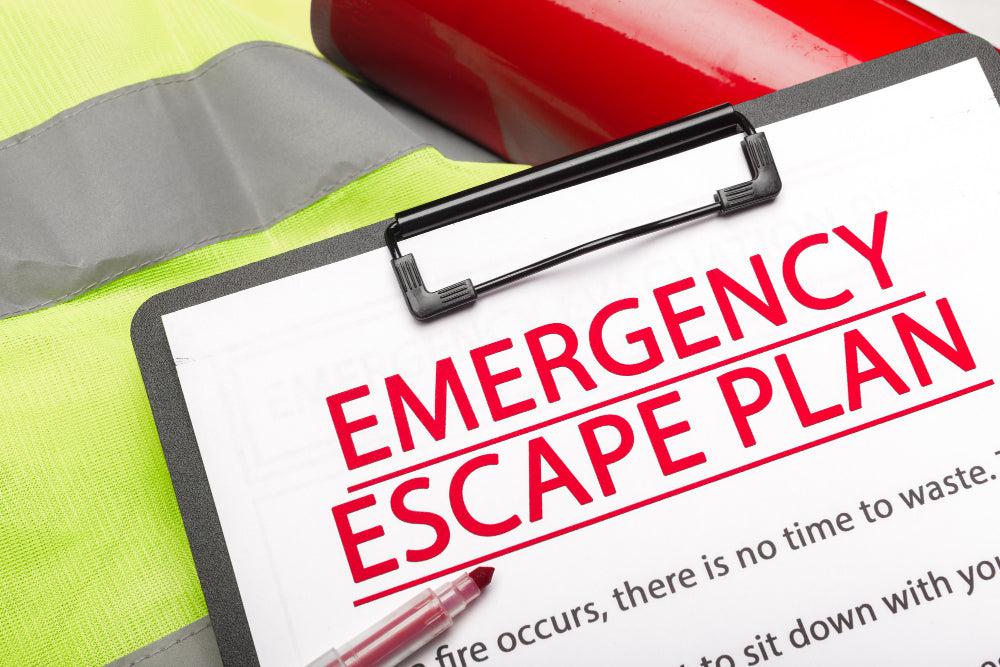When Every Second Counts
Pets are an integral part of many families, often considered cherished members who provide companionship, love, and even a sense of purpose. Yet, during emergencies like fires or other natural disasters, pets can be overlooked in the panic and rush to evacuate. It's essential to have a well-thought-out evacuation plan for your entire family, including your pets, to ensure everyone's safety.
1. Preparation is Key
a. Identification: Ensure that all your pets have identification. Dogs and cats should wear collars with ID tags that have their name, your contact number, and any urgent medical needs. Consider microchipping, as it offers a permanent identification solution.
b. Emergency Kit: Create an emergency kit for your pets, just as you would for the human members of your family. This should include:
- A few days' worth of food and bottled water.
- Medications and medical records.
- Litter and a portable litter box for cats.
- Leashes, harnesses, and carriers to transport pets securely.
- Familiar items: Toys, bedding, or treats to help alleviate stress.
c. Display Rescue Alert Stickers: Attach a sticker to a front window or door to let rescue workers know there are pets inside. Update the number of pets regularly, and if you evacuate with your pets, write "EVACUATED" across the sticker.
2. Planning the Evacuation
a. Know Your Pets' Hiding Spots: During fires or other emergencies, pets can become frightened and may hide. Knowing their common hiding spots will make it easier to find and evacuate them quickly.
b. Practice Makes Perfect: Regularly practice evacuating with your pets so they become used to the process. This can help reduce their stress and panic during an actual emergency.
c. Choose a Designated Caregiver: If you're not home during an emergency, a trusted neighbor or nearby family member should know your pets and be familiar with your evacuation procedures.
d. Plan Your Destination: Not all shelters will accept pets, so it's essential to have a plan in place. Research pet-friendly hotels or motels, or consider pre-arranging with friends or relatives to shelter your pets.
3. During the Evacuation
a. Act Calmly: Pets can pick up on human emotions. Remaining calm can help them stay calm too.
b. Evacuate Early: Don't wait for mandatory evacuation orders. Some pets, such as birds and exotics, can be very time-consuming to evacuate. Starting early can ensure you're not rushed.
c. Use Carriers: Always use carriers or leashes. This not only protects them from potential dangers but also prevents them from bolting in fear.
4. After the Fire
a. Return Home Cautiously: Before you bring your pets back, ensure your home is free from hazards like sharp debris, toxic fumes, or pooled water.
b. Monitor Behavior: Your pets might behave differently post-evacuation. Look out for signs of stress or trauma. If they continue, consult with your vet.
c. Familiarize Slowly: If your home has been affected by the fire, let your pet get used to the changes gradually. They might be disoriented or scared due to the unfamiliar scents and sights.
5. Remembering the Smaller and Larger Pets
Often when people think of pets in emergencies, they think of cats and dogs, but many people own birds, reptiles, small mammals, or even larger animals like horses:
-
Small Animals: Evacuate them in their cages or habitats if possible. Ensure they have adequate air and aren't placed in too cold or too hot areas.
-
Birds: Use a cloth or towel to cover their cage to reduce stress. Birds can be highly sensitive to smoke and chemicals.
-
Reptiles: Use a sturdy bag or small carrier. Ensure they have adequate warmth.
-
Horses and Livestock: These animals require specialized evacuation plans due to their size. Have a trailer ready and practice loading them. Know your evacuation routes and have a predetermined destination for them.
In conclusion, while it's a situation no pet owner wants to imagine, preparing for a fire emergency evacuation is essential to ensure the safety of all family members, including our four-legged, feathered, or scaled companions. With the right steps and regular practice, you can be ready to protect everyone you care about.

